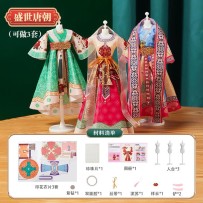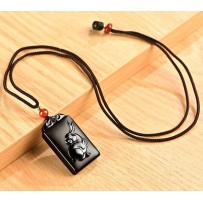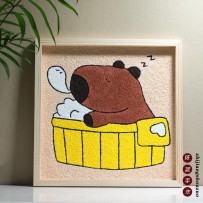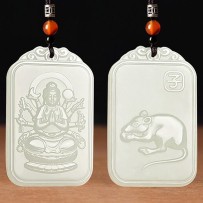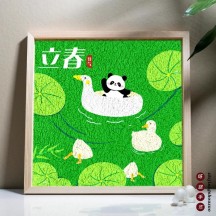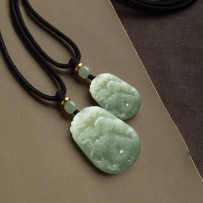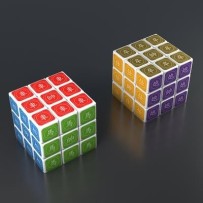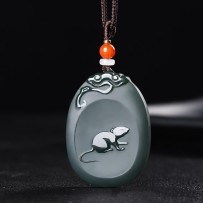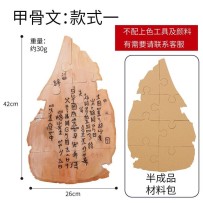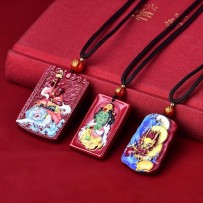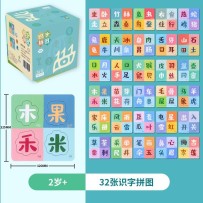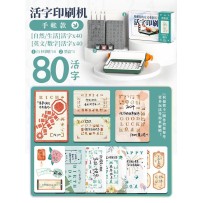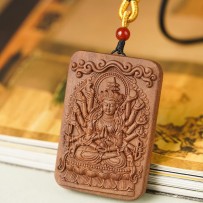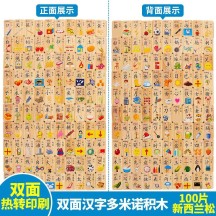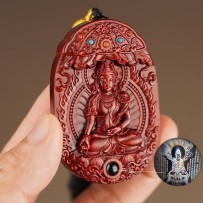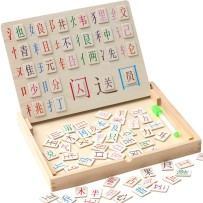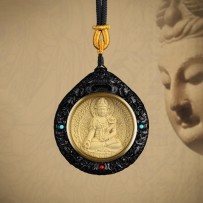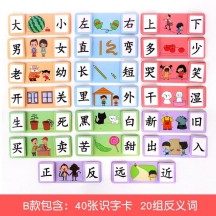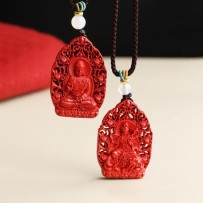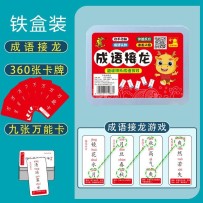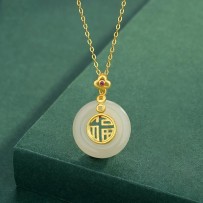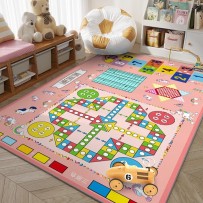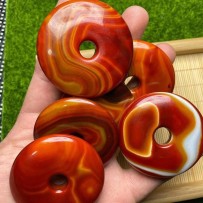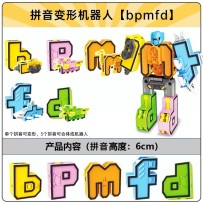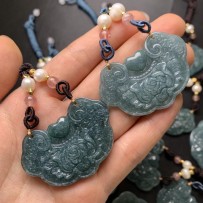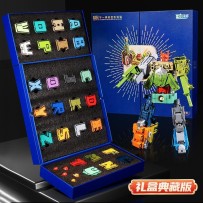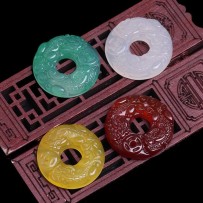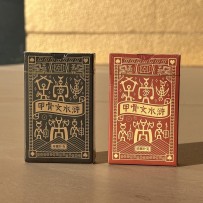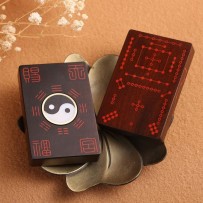Subcategories
Active filters
The twelve zodiac guardian gods, also known as the natal Buddha, the eight guardian gods, the twelve guardian deities, and the eight-body Buddha, are the twelve zodiac guardian gods of Japanese Esoteric Buddhism through the heavenly stems, earthly branches, the twelve causes and conditions, and the five elements.
Pulp painting is a form of arts and crafts created using paper pulp as the main material. It features bright colors and a relief-like texture. The colorful painting clay can be applied to various surfaces such as wood, porcelain, glass, stone, and paper, and the artwork is complete once it dries. Creating pulp paintings is a fun and whimsical activity, especially appealing to children.
The zodiac natal Buddha means that each zodiac sign has its own natal Buddha, and different natal Buddhas have different meanings. According to Indian Buddhist tradition, everyone has a bodhisattva or Buddha protecting them from birth. The day they are born, they are connected with the Buddha with whom they are destined to be, and are called "natal Buddhas".
The 24 Solar Terms are a traditional Chinese system of 24 specific dates used to divide the seasons and track climate changes. Each solar term represents different natural phenomena and agricultural activities.
Pulp painting is a form of arts and crafts created using paper pulp as the main material. It features bright colors and a relief-like texture. The colorful painting clay can be applied to various surfaces such as wood, porcelain, glass, stone, and paper, and the artwork is complete once it dries. Creating pulp paintings is a fun and whimsical activity, especially appealing to children.
The Chinese zodiac refers to the twelve animals that replace the twelve earthly branches and are used to indicate the time of birth of people, namely rat, ox, tiger, rabbit, dragon, snake, horse, goat, monkey, rooster, dog and pig. The Chinese zodiac is also commonly known as the "zodiac sign" - rat, ox, tiger, rabbit, dragon, snake, horse, goat, monkey, rooster, dog and pig. This is a unique way for Chinese people to indicate the time of birth, which is equivalent to the twelve zodiac signs in the West.
The Chinese zodiac refers to the twelve animals that replace the twelve earthly branches and are used to indicate the time of birth of people, namely rat, ox, tiger, rabbit, dragon, snake, horse, goat, monkey, rooster, dog and pig. The Chinese zodiac is also commonly known as the "zodiac sign" - rat, ox, tiger, rabbit, dragon, snake, horse, goat, monkey, rooster, dog and pig. This is a unique way for Chinese people to indicate the time of birth, which is equivalent to the twelve zodiac signs in the West.
Oracle bone script, also known as “Qiwens” (inscriptions), turtle shell script, Yinxu script, or oracle bone divination inscriptions, refers to the characters inscribed on turtle shells or animal bones used by the royal family during the late Shang Dynasty for divination and record-keeping. It is the earliest known systematic and mature writing system in China and throughout East Asia.
Tangka refers to a unique scroll painting in Tibetan Buddhism, which mainly contains the biography of Buddha, various Buddha images, religious history, and images of various patriarchs. Most of them are painted on cloth, silk or paper, and then mounted with colored satin. It is a necessary item for Buddhists to worship and practice at any time.
The idea of the guardian deity of the zodiac is that according to the ten heavenly stems and twelve earthly branches, the causal relationships of the 12 zodiac signs, and the mutual generation of the five elements of "earth, water, fire, wind, and space", the 12 zodiac signs are blessed by eight Buddhas and Bodhisattvas.
It is figuratively called the "birth Buddha", which is the guardian deity of the zodiac.
Buddha and Bodhisattva not only have a heart of compassion to save the world, but also a heart of enlightenment and awakening to others, protecting all living beings.
The typebars inside a typewriter are essentially individual movable type blocks. Designing a new movable type printing press using the appearance of a typewriter represents a natural continuation of the evolution of written culture.
Therefore, we drew inspiration from one of China’s Four Great Inventions — movable type printing — and combined it with the modular design of building blocks. Infused with the modern form of a typewriter, we have created a brand-new movable type printing press.
The idea of the guardian deity of the zodiac is that according to the ten heavenly stems and twelve earthly branches, the causal relationships of the 12 zodiac signs, and the mutual generation of the five elements of "earth, water, fire, wind, and space", the 12 zodiac signs are blessed by eight Buddhas and Bodhisattvas.
It is figuratively called the "birth Buddha", which is the guardian deity of the zodiac.
Buddha and Bodhisattva not only have a heart of compassion to save the world, but also a heart of enlightenment and awakening to others, protecting all living beings.
Dominoes are rectangular tiles made of wood or plastic. When playing, the tiles are arranged in a line at set intervals. By gently knocking over the first tile, the rest fall in sequence, creating a chain reaction. Dominoes are not only a game, but also a sport—and even a form of culture.
The idea of the guardian deity of the zodiac is that according to the ten heavenly stems and twelve earthly branches, the causal relationships of the 12 zodiac signs, and the mutual generation of the five elements of "earth, water, fire, wind, and space", the 12 zodiac signs are blessed by eight Buddhas and Bodhisattvas.
It is figuratively called the "birth Buddha", which is the guardian deity of the zodiac.
Buddha and Bodhisattva not only have a heart of compassion to save the world, but also a heart of enlightenment and awakening to others, protecting all living beings.
The idea of the guardian deity of the zodiac is that according to the ten heavenly stems and twelve earthly branches, the causal relationships of the 12 zodiac signs, and the mutual generation of the five elements of "earth, water, fire, wind, and space", the 12 zodiac signs are blessed by eight Buddhas and Bodhisattvas.
It is figuratively called the "birth Buddha", which is the guardian deity of the zodiac.
Buddha and Bodhisattva not only have a heart of compassion to save the world, but also a heart of enlightenment and awakening to others, protecting all living beings.
The idea of the guardian deity of the zodiac is that according to the ten heavenly stems and twelve earthly branches, the causal relationships of the 12 zodiac signs, and the mutual generation of the five elements of "earth, water, fire, wind, and space", the 12 zodiac signs are blessed by eight Buddhas and Bodhisattvas.
It is figuratively called the "birth Buddha", which is the guardian deity of the zodiac.
Buddha and Bodhisattva not only have a heart of compassion to save the world, but also a heart of enlightenment and awakening to others, protecting all living beings.
Idiom Solitaire is a word game in which players continue the chain by using the last character of one idiom as the first character of the next. This game is not only entertaining but also helps improve language skills, preserve cultural heritage, promote social interaction, and support emotional well-being.
Ping An Kou is a traditional Chinese jade ornament. It is round and flexible in appearance, which conforms to the "doctrine of the mean" in traditional Chinese culture. In ancient times, it was called "Bi" and has the effect of nourishing the body. In modern times, it is often given to lovers, relatives, and friends as a gift to wish for peace.
Ping An Kou is a traditional Chinese jade ornament. It is round and flexible in appearance, which conforms to the "doctrine of the mean" in traditional Chinese culture. In ancient times, it was called "Bi" and has the effect of nourishing the body. In modern times, it is often given to lovers, relatives, and friends as a gift to wish for peace.
The patterns on jade pendants are extremely delicate and varied, and through the patterns, we can understand the rich cultural connotations, production techniques, and social and economic environment of the time.
Ping An Kou is a traditional Chinese jade ornament. It is round and flexible in appearance, which conforms to the "doctrine of the mean" in traditional Chinese culture. In ancient times, it was called "Bi" and has the effect of nourishing the body. In modern times, it is often given to lovers, relatives, and friends as a gift to wish for peace.
These creatively designed playing cards make oracle bone script appear adorably charming. Each card is like a window into ancient civilization, allowing everyone to learn more about oracle bone script through interactive gameplay. This fresh and engaging approach deepens the understanding and memory of characters from Water Margin, encouraging more people to appreciate and take interest in oracle bone script, and to experience the beauty of Chinese charac
The Hetu and Luoshu are two mysterious patterns handed down from ancient China. They contain profound principles of the universe and astrology and are known as the "Magic Cube of the Universe". They are the source of Chinese culture, Yin-Yang and the Five Elements. The phrase comes from the Book of Changes, "The Hetu and the Luoshu". He refers to the Yellow River. Luo refers to the Luo River.










